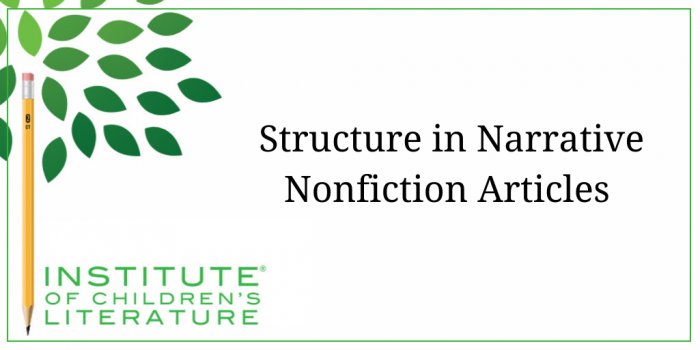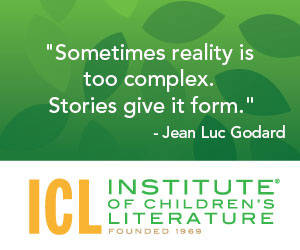1000 N. West Street #1200, Wilmington, DE 19801
© 2024 Direct Learning Systems, Inc. All rights reserved.

Most nonfiction can be roughly divided into two types: expository or narrative. Expository nonfiction is mainly concerned with conveying information. The most common structure of expository nonfiction consists of breaking the main topic into subsections and offering the reader important observations about the subtopics, each supported by evidence.

Narrative nonfiction tells a story so the middle of a narrative nonfiction piece will most often be all––or mostly––chronological, much as a fictional narrative tends to be all––or mostly––chronological. This chronological order of the middle part of narrative nonfiction helps the reader understand and follow the true story easily. But a piece of narrative nonfiction will not usually throw us into a scene in the beginning the way a fictional story will. Instead, the beginning of a narrative nonfiction piece will often feature the most interesting or important thing about the topic (or the most interesting element in the true story), even if that is presented out of the chronological structure.
The opening moment in any nonfiction piece has the same job as any beginning: it is there to grab the reader’s interest. This means a biographical piece often opens with the most interesting moment or accomplishment in the person’s life (or the piece of the person’s life you intend to tell). The most interesting thing any of us do is not generally happening at the time of our birth, which means a strict chronology can’t usually be followed in narrative nonfiction. But what if the nonfiction piece is an anecdote instead of a story of the person’s whole life?

(By the way, it is worth noting, that virtually every publisher gets an astounding number of submissions about Abraham Lincoln’s beard. As such, it’s overdone and therefore not a good topic for a nonfiction piece. But it’s a nifty story.)
In a fictional narrative, the ending of the story is when the story problem is resolved and any lose threads that are likely to bother the reader are tidied up. In a nonfiction narrative, the ending of the story is usually the part where the narrative is shown to be important. The ending lets the reader know what the point of this recitation has been.

For instance, in a biography.com retelling of the story of Abraham Lincoln’s beard, author Sara Kettler ends by telling about Lincoln being smuggled to Washington DC for his inauguration after learning of a plot against his life. The writer suggests the new beard may have helped disguise his identity as he travelled since people wouldn’t have expected to see a bearded Lincoln. This ending does double duty. It shows us why growing a beard was important, thus adding an extra layer of importance to the entire story of Lincoln’s beard. It also makes the tale all the more interesting.
So structure in narrative nonfiction tends to be a kind of marriage between fiction and nonfiction structures. The beginning and ending are uniquely nonfiction in tone and purpose, while the middle leans heavily on fiction narrative structure to make the narrative feel more like an interesting and appealing story. This blended structure helps make narrative nonfiction a favorite with kids and educators, so it’s worth putting it in your writing toolbox.
With over 100 books in publication, Jan Fields writes both chapter books for children and mystery novels for adults. She’s also known for a variety of experiences teaching writing, from one session SCBWI events to lengthier Highlights Foundation workshops to these blog posts for the Institute of Children’s Literature. As a former ICL instructor, Jan enjoys equipping writers for success in whatever way she can.
1000 N. West Street #1200, Wilmington, DE 19801
© 2024 Direct Learning Systems, Inc. All rights reserved.
1000 N. West Street #1200, Wilmington, DE 19801
© 2024 Direct Learning Systems, Inc. All rights reserved.
1000 N. West Street #1200, Wilmington, DE 19801
© 2024 Direct Learning Systems, Inc. All rights reserved.
1000 N. West Street #1200, Wilmington, DE 19801
© 2025 Direct Learning Systems, Inc. All rights reserved.
1000 N. West Street #1200, Wilmington, DE 19801
©2025 Direct Learning Systems, Inc. All rights reserved. Privacy Policy.
7 Comments